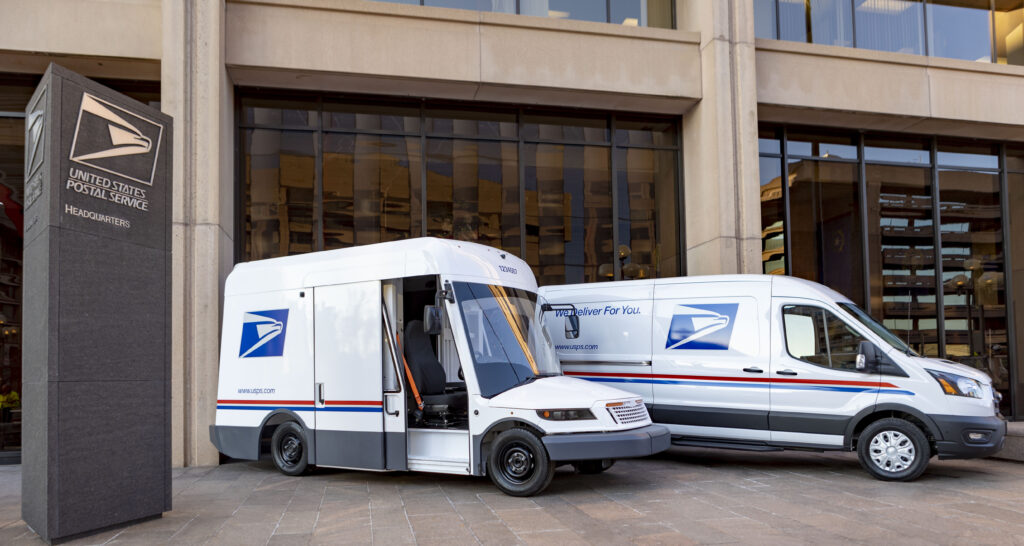The United States Postal Service (USPS) expects to acquire at least 66,000 battery electric delivery vehicles as part of its 106,000-vehicle acquisition plan for deliveries between now and 2028.
Vehicles purchased as part of this anticipated plan will begin to replace the postal service’s aging delivery fleet of over 220,000 vehicles.
USPS anticipates at least 60,000 next generation delivery vehicles (NGDV), of which at least 75% (45,000) will be battery electric. As part of this plan, a total of 21,000 additional commercial off-the-shelf (COTS) vehicles are also expected to be battery electric, depending on market availability and operational feasibility. The postal service also anticipates including internal combustion vehicles necessary to meet immediate vehicle replacement needs.
The vehicles will feature air conditioning and advanced safety technology and are more suited to modern day operational requirements than the existing fleet. The investment has been partially attributed to USPS’s improving financial condition which includes US$3bn in congressional funding appropriated under the Inflation Reduction Act (IRA). The first new NGDVs are expected to start servicing postal routes in late 2023.
Louis DeJoy, USPS postmaster general, said, “We have a statutory requirement to deliver mail and packages to 163 million addresses six days per week and to cover our costs in doing so – that is our mission. As I have said in the past, if we can achieve those objectives in a more environmentally responsible way, we will do so.
“The US$3bn provided by Congress has significantly reduced the risk associated with accelerating the implementation of a nationwide infrastructure necessary to electrify our delivery fleet. While most of the electric vehicle funding will continue to come from postal service revenues, we are grateful for the confidence that Congress and the administration have placed in us to build and acquire what has the potential to become the largest electric vehicle fleet in the nation.
“What is less widely understood is that our network modernization initiative is necessary to enable this vehicle electrification and will also provide meaningful cost and carbon reductions in other ways. A key focus of our modernization effort is to reduce inefficient transportation and improve distribution operations, resulting in far less air cargo and far fewer truck trips. When combined with our substantial commitment to the electrification of our delivery vehicles, the postal service will be at the forefront of our nation’s green initiatives,” he said.


